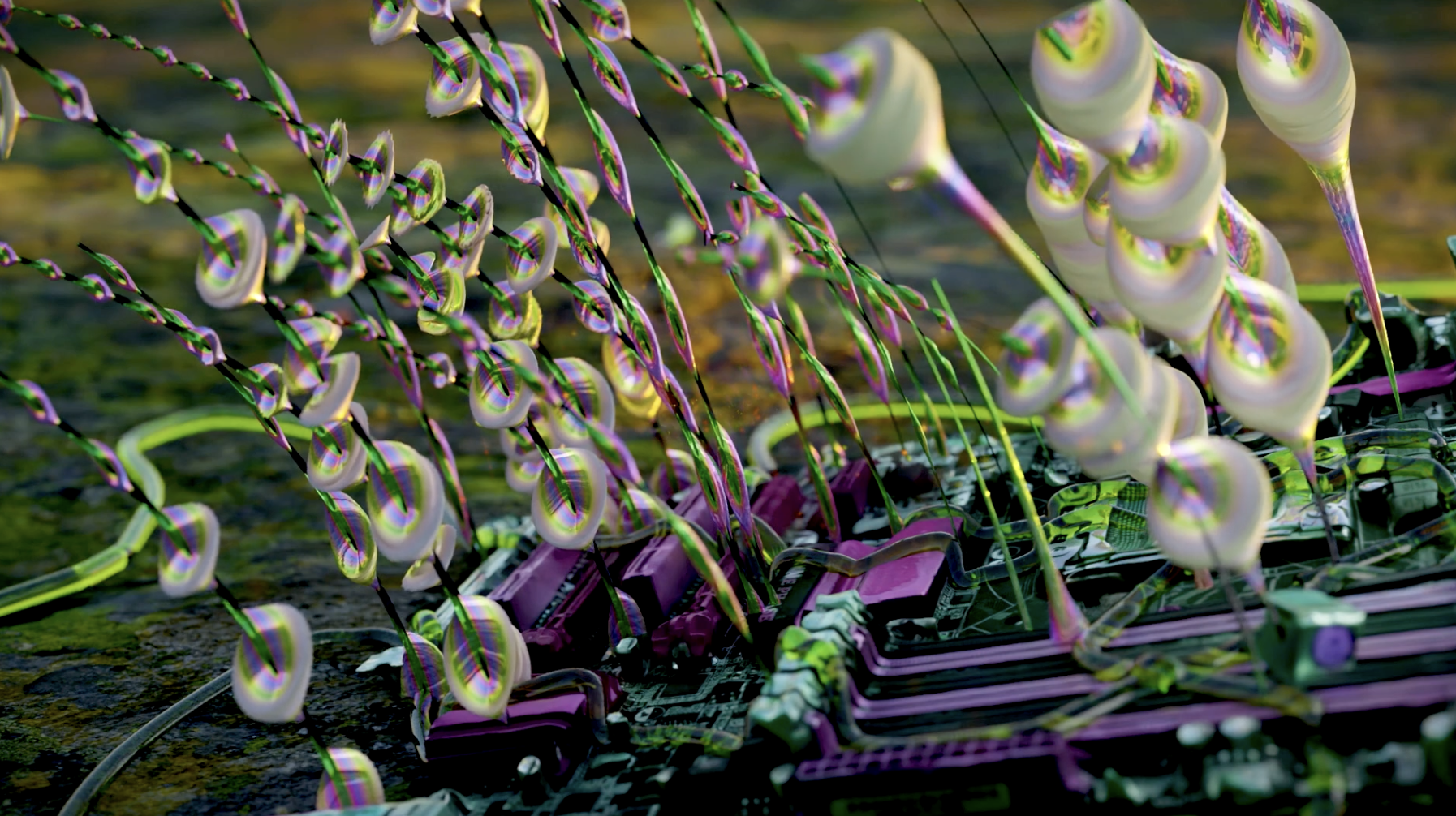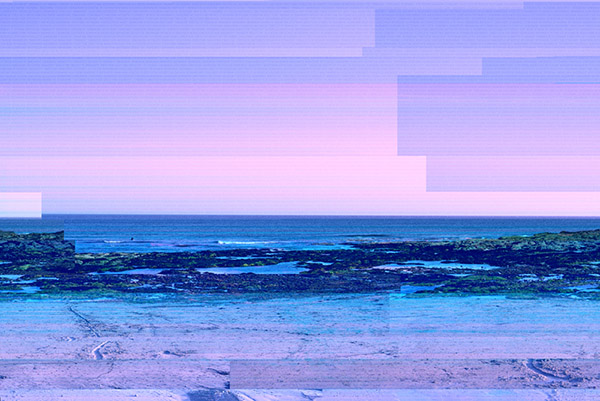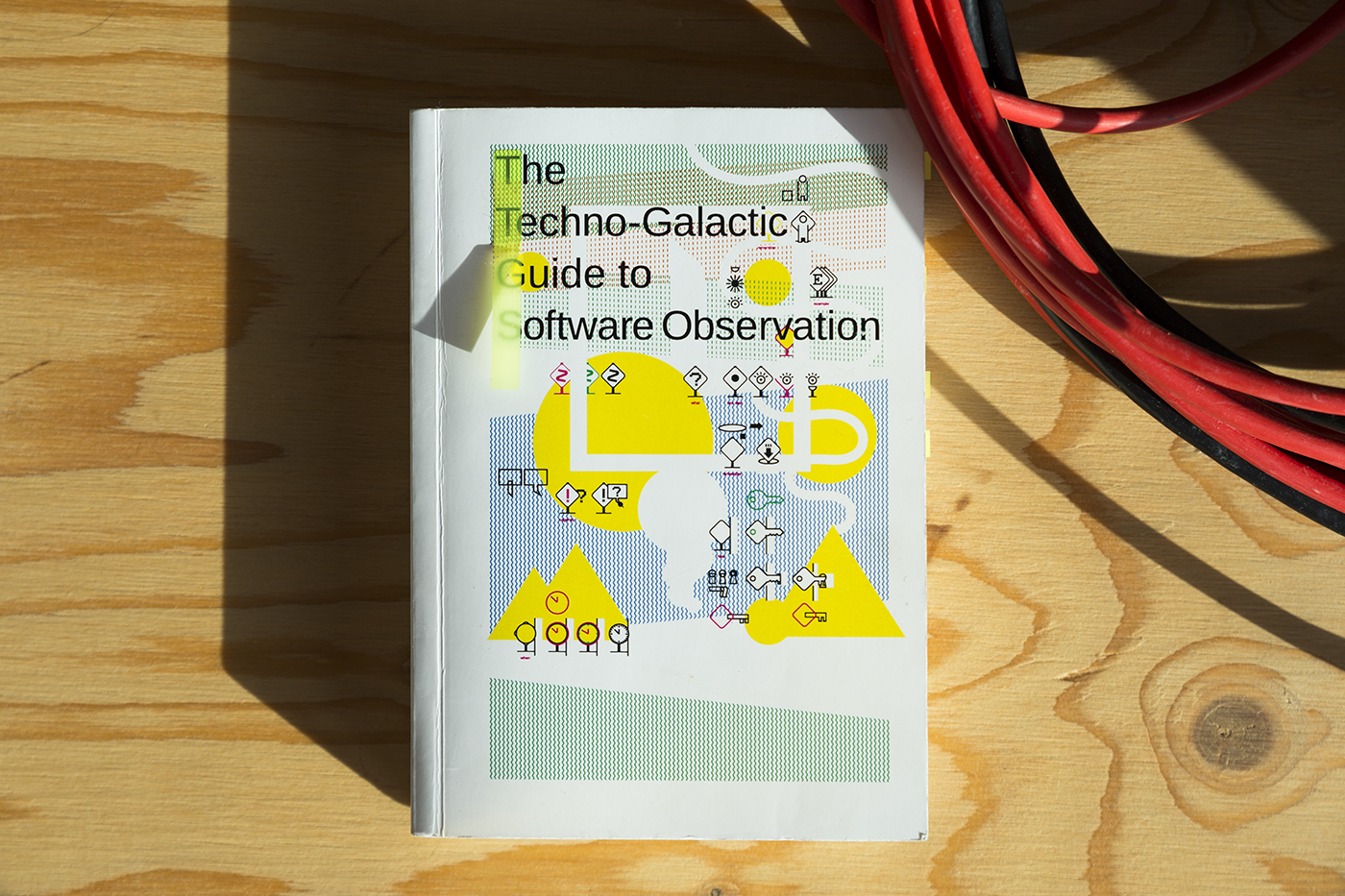Greening or Greenwashing AI? The politics of measuring environmental impacts

Image Source: Sabrina Ratté, INFLORESCENCES, 2023.
Research outputs related to this project:
♦ [Journal Article] « Beyond AI as an environmental pharmakon: Principles for reopening the problem-space of machine learning’s carbon footprint », Loup Cellard, Christine Parker, Fiona Haines, Environment and Planning E, 2025.
♦ [News Media Essay] « Verdir l’IA : un cheval de Troie pour étendre son usage ? », Loup Cellard, Christine Parker, AOC, 01/02/2024. (full version here, or in print here)
♦ [Short paper] “Generative AI environmental impacts”, Dr Loup Cellard & Prof Christine Parker, as part of Beyond ChatGPT: a multidisciplinary workshop on Generative AI and foundation models, 10/05/2023, QUT, Brisbane.
♦ [Conference Presentation] “Greening or greenwashing AI? The politics of measuring environmental impacts”, Loup Cellard, Christine Parker, Fiona Haines, Workshop Standards and assurance for data-driven technologies, University of Birmingham, 23/05/2023.
♦ [Conference Presentation] “Greening or greenwashing AI? The invisible work of standardisation in the politics of virtue”, Loup Cellard, Christine Parker, Fiona Haines, ADM+S Symposium 2022, RMIT.
The Ecological Implications of Data Centers and Telecom Cables

Image source: Conor McGarrigle
The project Ecological Implications of Data Centres seeks to understand how companies, public agencies and civil society address the environmental conditions and limitations facing the establishment and management of data centres in urban areas. A central part of data centre management is heat management: servers produce heat, and as they are gathered in large numbers in close areas, temperatures rise raising the risk of fire. To overcome this, data centre operators have various techniques to cool down these facilities and avoid any risks of data loss caused by fires. Thus, this project will ask: what shapes the environmental impacts of data centres cooling infrastructures? In order to address this question, we will take as a case study the rapid growth of data centres in Marseille (France), which is particularly interesting as this city is in a warm climate, making the issue of heat management more difficult there than in the north of Europe. This project is conducted with Clément Marquet (Mines Paris).
Research outputs related to this project:
♦ [Journal Article] “Frictions sous-marines. Écologies et politiques des fragilités de l’interconnexion numérique”, Loup Cellard and Clément Marquet, Revue d’Anthropologie des Connaissances [Online], 17-4 | 2023, Special issue ”Fragilités Matérielles” edited by Jérôme Denis et David Pontille;
♦ [Conference Presentation] “A sea of possibilities — submarine cables, fragile ecologies and corporate accountability in the Mediterranean Sea », Clément Marquet & Loup Cellard, Nordic STS Conference, 9th June 2023.
♦ [Conference Presentation] “Data Centres, real estate and the environmental materiality of cloud computing”, Clément Marquet & Loup Cellard, Workshop on Automated Space, RMIT, 27/04/2023.
♦ [Conference Presentation] « Coal mines, submarine bunkers and undersea cables: exploring data centers’ infrastructural ecologies in Marseille (FR) », Clément Marquet & Loup Cellard, Swiss Congress of Historical Science, 29 June–1st July 2022, University of Geneva.
♦ [Conference Presentation] « The Ecological Implications of Data Centres in Marseille », Loup Cellard & Clément Marquet, Sciences-Po Medialab, 28 June 2022.
♦ [Conference Presentation] « A sea of possibilities — submarine cables, fragile ecologies and corporate accountability in the Mediterranean Sea », Clément Marquet & Loup Cellard, 4S Mexico, 7-10 December 2022.
Theatres of Algorithmic Transparency

Image source: Yasmin Dwiputri & Data Hazards Project / Better Images of AI / Managing Data Hazards / CC-BY 4.0
An inquiry into the politics of algorithmic transparency in French public bodies. The PhD thesis associated to this project has been completed in February 2021. My methodological framework was drawing on science & technology studies, anthropology and design research. I was supervised by Noortje Marres and Nate Tkacz at the Centre for Interdisciplinary Methodologies, Warwick University (Coventry, UK).
Research publications on the politics of algorithmic transparency:
♦ [Special Issue]Cellard, L. (editor) ”Mésaventures de la bureaucratie algorithmique ”, dossier Mineur, Multitudes n°98, March 2025.
♦ [Journal Article] Cellard, L. (2024). Theaters of Algorithmic Transparency and the Politics of Exemplarity. Science, Technology, & Human Values, 0(0).
♦ [Project Report], Cellard, L. Mandron, C., Fouquenet, M., « 4 enseignements d’un projet de médiation aux données et algorithmes : le cas d’un outil de suivi de l’artificialisation des sols ». (Part 1/2), Open Datactivist, 26/11/2024.
♦ [Journal Article] « Algorithms as Figures. Towards a post-digital ethnography of algorithmic contexts ». New Media & Society. Special Issue « Algorithmic Governance in Context ». Edited by: Daria Gritsenko, Annette Markham, Holger Pötzsch, Mariëlle Wijermars, 2022.
♦ [Book Chapter] « Algorithmic Transparency: On the Rise of a New Normative Ideal and its Silenced Performative Implications » in This Obscure Thing Called Transparency. Politics and Aesthetics of a Contemporary Metaphor, edited by Emmanuel Alloa, Leuven University Press, 2022.
♦ [PhD Thesis] Theatres of algorithmic transparency: a post-digital ethnography. PhD Dissertation. University of Warwick. 2020.
♦ [Journal Article] Le design de la transparence : une rhétorique au coeur des interfaces numériques. Loup Cellard et Anthony Masure. Revue Multitudes, 2018/4 n° 73 | pages 100 à 111. Dossier dirigé par Yves Citton et Emmanuel Alloa.
♦ [Creative Poster] Transparency Gestures Critical Table, Herrenhausen Conference, Berlin, June 12-14, 2018.
♦ [Conference Paper] Mapping transparency issues in design and technology through digital methods: Wikipedia Case Study, Cellard, L. Reyes, E. in Proceedings of the first Interface Politics conference, Barcelona, Spain, April 27-29, 2016. See the web experimentation here.
Public Policy publications on algorithmic transparency:
♦ [Public Policy White-Paper] « Les demandes citoyennes de transparence au sujet des algorithmes publics ». White-Paper by Loup Cellard for Etalab, french open data task force. 2019.
♦ [Contribution in Public Policy Report] « Guide des Algorithmes Publics », Etalab, french open data task force, 2019.
Inventive and experimental methods of inquiry

Inventive and experimental methods compounding science, art, design, and tech sensibilities.
Publications linked to this track of research:
♦ [Journal Article] Daniel Angus, Lauren Hayden, Abdul Karim Obeid, Xue Ying Tan, Nicholas Carah, Jean Burgess, Christine Parker, Mark Andrejevic, Robbie Fordyce, Loup Cellard, Julian Bagnara, “Computational Methods for Improving the Observability of Platform-Based Advertising.” Journal of Advertising, September, 1–20, 2024.
♦ [Journal Article] “Surfacing Algorithms: An Inventive Method for Accountability ». Qualitative Inquiry. Special Issue: « Methods for researching automated futures ». Edited by Sarah Pink (Monash University), 2022.
♦ [Essay in artist monograph] “7 gestes pour performer dans le théâtre du social ”. Essai de Loup Cellard dans le livre Prose Postérieure. Le courrier électronique d’une instructrice d’aérobic sauvage et grotesque. Un livre de l’artiste Laëtitia Jasserand. Edité par Les Commissaires Anonymes.
♦ [Item in collection] “Interface Détournement” in The Techno-Galactic Guide to Software Observation. Compiled by Peggy Pierrot, Anita Burato, Christoph Haag, Michael Murtaugh, Femke Snelting, Seda Gürses. Edited by Constant. 2018.
♦ [Book chapter] « Provocations heuristiques : expéditions critiques dans les territoires des revues scientifiques électroniques. Mourat, R. Cellard, L. Royer, M. in Design et innovation dans la chaîne du livre, PUF, 2017.
Datavizs theory from a design+humanities perspective

Publications linked to this track of research:
♦ [Journal Article] Self-Recognition in Data Visualization. How members see themselves in social visualizations. Dario Rodighiero & Loup Cellard. Espacetemps. 2019
♦ [Conference Paper] The Trajectories Tool: Amplifying Network Visualization Complexity. Alexandre Rigal, Dario Rodighiero & Loup Cellard. Digital Humanities Conference 2015.